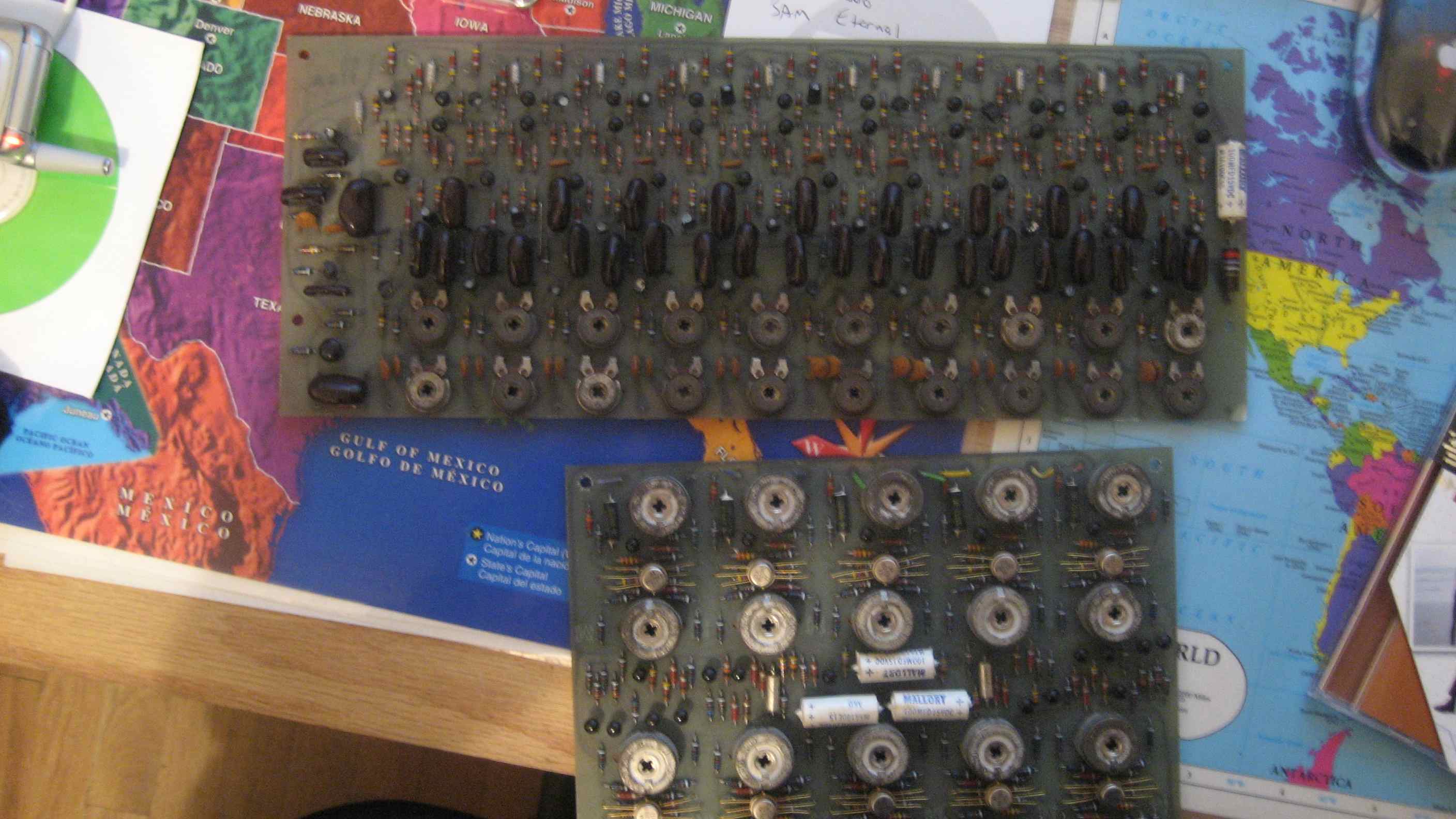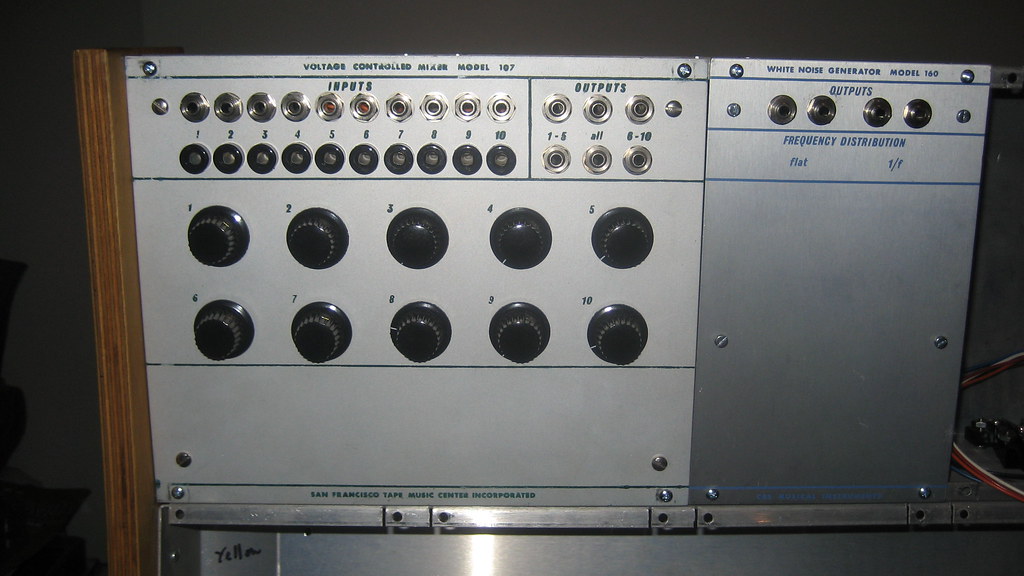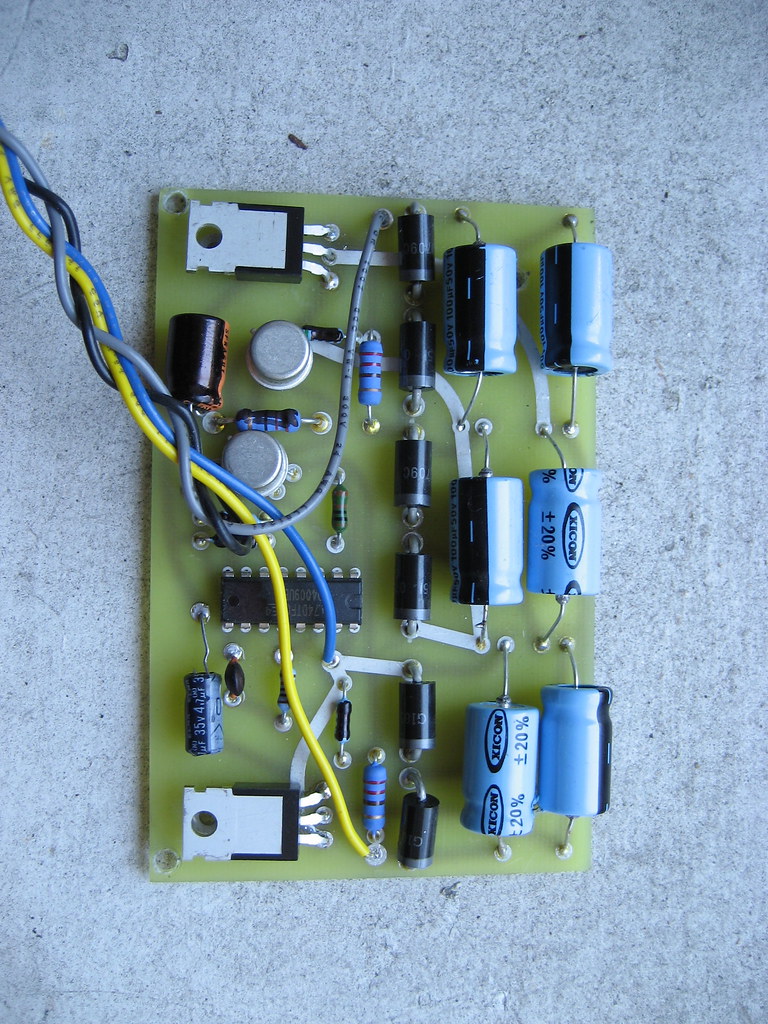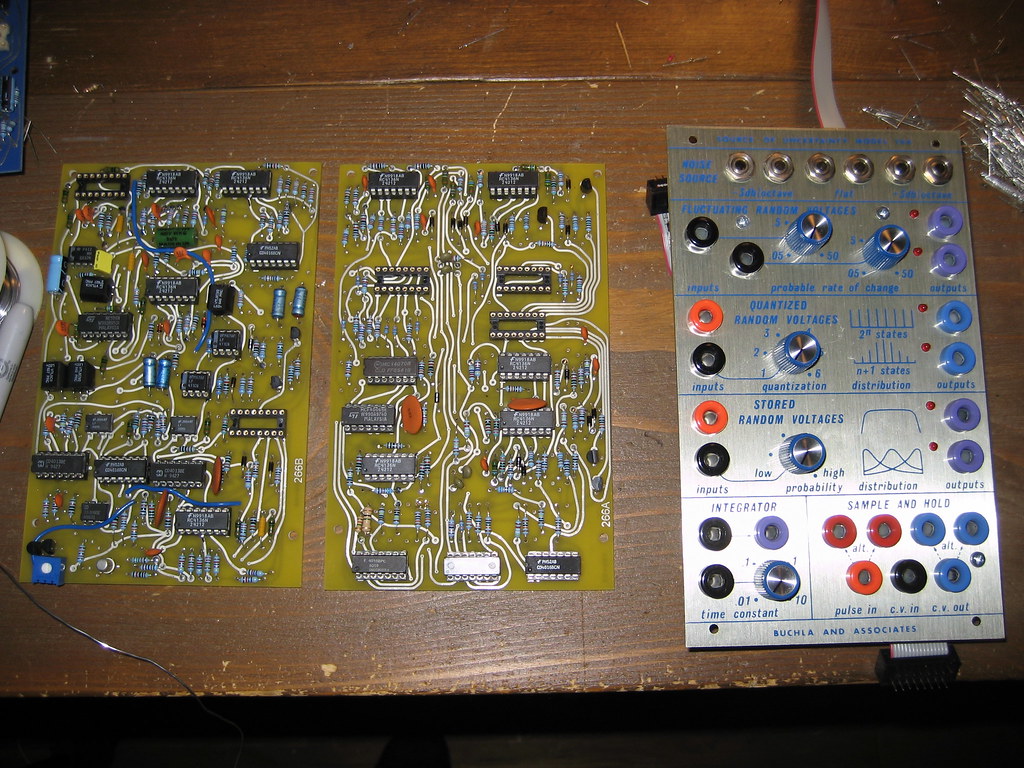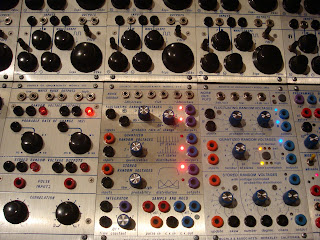
The Buchla is not usually associated with keyboard type ADSR envelopes.
I patched up a 281, plugged into the 107 voltage controlled mixer to make some percussion sounds. The good thing about a 100 series gate like this or the 110 is that they are all transistor and don't have the characteristic Vactrol mushy attack. Everything has it's place after all.
I have a loop going, so the envelope keeps triggering, while I work on it. I started with function generator 1 in looping mode and it's trigger out plugged into the trigger in on function generator 2. In this patch, both are triggering at the same time, and I'm taking the voltage out of the combiner section at the bottom. It is a diode combiner and not a mixer, so it puts out whichever is the higher of the 2 voltages at any given time. If the second function generator is set with a slow attack, you can create a cool, compressed drum type sound, where there's an attack followed by a swell in the decay portion. If you put the switch into AR mode on function generator 2 you can play this from a keyboard with sustain.

Then I put the 281 into quadrature mode. The pulse output from function generator 2 plugged back to the pulse input of function generator 1. This gives you a AHDSR of sorts. The Attack control of function generator 1 controls the attack time. The attack control of function generator 2 controls the peak hold time. The decay control in function generator 1 and the pot in the combiner section control the decay and sustain (unfortunately decay is the time of decay AND sustain so you have to massage them to get what you want). The decay control on function generator 2 controls the release. This setup is good for making hard punching sounds, because of the peak hold. Again, put the switch into AR mode on function generator 2 for sustain.


The final option I can come up with right now, is to invert the second function generator. The first function generator's pulse input is where the envelope is trigger from. The quad mode is on. The cv out of function generator one is plugged into a voltage processor and turned up to 100%. The CV out of function generator 2 is sent into the voltage processor and inverted, it's inverted gain will then be the sustain control. It should be in AR mode. The attack control on function generator 1 is the attack, the attack control on function generator 2 is the decay. The decay control on function generator 1 is the release and the decay control on function generator 2 should be all the way down (it's sort of a delay until the next envelope fires if this is all looped). What I like about this is how it always completes the full attack and decay faze before it starts the release, unlike a "normal" ADSR. That makes it great for sending a pulse from a sequencer and getting percussion envelopes with full control.
Oh, and you can tweak the shape of the segments with feedback too...






















